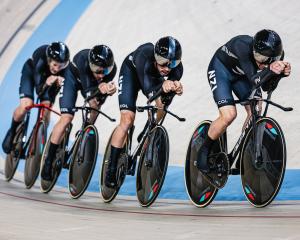
The smelter employs about 800 people directly and supports about another 2500. For all the talk and planning about replacement opportunities, nothing could come close to matching that magnitude.
The 20-year electricity arrangement also blows away a large cloud of uncertainty hanging over the electricity industry. Tiwai uses about 12% of power generated. Investment was delayed by the ‘‘will it, won’t it close’’ doubts.
Generators and investors were reluctant to charge ahead when the market abruptly could be over-supplied. Now, they have a much better idea of where they stand.
Analysts say the go button on various solar and wind projects will be pushed. There will also be more time to improve electricity transmission issues.
The Tiwai saga is a vivid example of the importance of stability and certainty. It is difficult to make progress when the future is unclear.
This is an important lesson for New Zealand and its politics andpeople.
Invercargill Mayor Nobby Clark gave a good example, saying those looking at building new houses in the city would now have the confidence to go ahead. Southland District Mayor Rob Scott said it was ‘‘great to have that certainty’’.
A third of South Port’s cargo and 20% of its profits are attributed to the smelter. It is also a big supporter and sponsor of local organisations.
Meridian Energy, Contact Energy and Mercury NZ, after complicated and protracted negotiations, came to a deal to supply 572MW of electricity to meet the smelter’s full needs.
While much of the agreement is confidential, smelter owners New Zealand Aluminium Smelters (NZAS) — 80% owned by huge Anglo-Australian multinational Rio Tinto — has agreed to make up to 185MW available to the national grid in times of severe shortages.
In essence, NZAS will be paid not to use power at those times. This brings flexibility to national supply and is described as a giant back-up battery. It is about a quarter of the back-up that the now-canned multibillion-dollar Lake Onslow scheme could have provided.
The chances of power cuts are reduced, and power prices should fluctuate less frequently.
NZAS had applied brinkmanship tactics over the past 12 years. It extracted $30million from the government in 2013 when it threatened to close. It announced a ‘‘strategic review’’ in 2019 and announced in 2020 it would close the following year.
After receiving super-cheap power — the Electricity Authority estimated it cost New Zealand households $200 a year — NZAS agreed to keep the smelter open until the end of this year.
However, the price of aluminium climbed and in 2022 NZAS indicated it might stay. The price has remained high, especially for Tiwai’s high-purity product, important in high-tech. Rio Tinto would also have valued the premium it receives from aluminium made from renewable energy.
Fortunately, NZAS’s formidable bargaining power had eroded. It overplayed its hand with the closure announcement because the government, electricity companies and even Southland were fed up with being mucked around.
Alternative power-hungry uses for Manapouri’s electricity close to source — such as data centres and the generation of ‘‘green’’ hydrogen — began emerging. The government and Southland seriously put their minds and efforts into a post-Tiwai world.
The deal, for a substantially higher price than at present, also allows for better efforts on the serious environmental remedial work required at the site. Te Runaka o Awarua is integral to this work and has welcomed the agreement.
It is not all good news. The smelter emits an estimated 600,000 tonnes of carbon dioxide a year, nearly 1% of New Zealand’s greenhouse gas emissions. There are questions about its continued exemption from the emissions trading scheme, as an exporter competing with overseas counterparts.
The smelter’s presence adds to this country’s staggering challenge to meet its 2030 Paris Agreement targets. At least, globally, it is better the aluminium be produced from New Zealand hydro than from coal-fired sources somewhere else.
— Otago Daily Times













